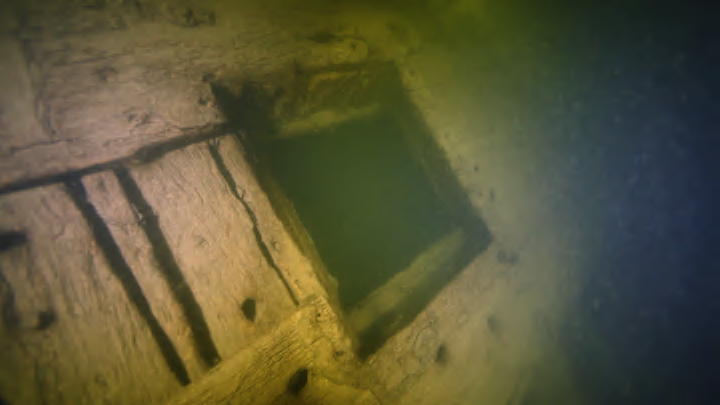In August 1628, a hulking warship called the Vasa (named for Sweden’s royal family) began its highly anticipated maiden voyage from Stockholm. To say it didn’t go well would be the understatement of the 17th century: King Gustav II Adolf had wanted the vessel to be massive at an unprecedented scale, and builders never quite landed on the correct proportions for such a task. The future crown jewel of the Swedish navy sank before it even hit the one-mile mark.
Its sister ship, Äpplet (“the apple”), had better luck. Taking notes from his recent failure, master shipbuilder Hein Jakobsson tweaked the shape of the hull and widened the whole ship to better accommodate its bulk. Overall, its size wasn’t exactly a selling point: As Sweden’s Vrak – Museum of Wrecks explains, huge vessels required costlier upkeep and were also harder to sail than their smaller counterparts; thus, Äpplet likely spent a considerable portion of its naval career just sitting around. But it did at least stay afloat well enough to participate in the Thirty Years’ War and remain in service until 1658. After that, it’s believed that the ship was intentionally sunk to help create underwater spike strips, forming a barricade in the waters off the coast of Vaxholm that could damage enemy vessels.
The precise location of Äpplet’s final resting place has been a mystery for the last few centuries. So in one respect, the Vasa made out slightly better than its intrepid younger sibling: The wreck was unearthed back in the 1950s and is now on display in its very own, very popular museum.

But now, at long last, Äpplet’s remains have been found, too. The discovery was made by maritime archaeologists from Vrak – Museum of Wrecks as part of Stockholm University’s “The Forgotten Fleet” program—an initiative that maps and studies ships from Swedish naval history. The researchers first spotted Äpplet’s then-unidentified wreck in December 2021 after teaming up with the Swedish navy to survey a strait off Vaxholm.
“Our pulses spiked when we saw how similar the wreck was to Vasa,” Vrak maritime archaeologist Jim Hansson said in a press release. “Both the construction and the powerful dimensions seemed very familiar. The hope of finding one of Vasa’s sister ships was sparked within us.”
Then, earlier this year, they tested some timber taken from the wreck and learned that certain oak samples hailed from the same area (and roughly the same time period) that the Vasa’s wood had come from. With that detail—and other archival evidence and design similarities—the team concluded that the anonymous Vaxholm shipwreck was, in fact, Äpplet.
In order to preserve the wreck, there are currently no plans to remove it from its grave. Instead, archaeologists will study digital data collected underwater. A key focus of the research is to pinpoint exactly how Äpplet differed from its ill-fated predecessor.
“This will help us understand how the large warships evolved, from the unstable Vasa to seaworthy behemoths that could control the Baltic Sea—a decisive factor in Sweden’s emergence as a great power in the 1600s,” maritime archaeologist Patrik Höglund explained in the press release.
